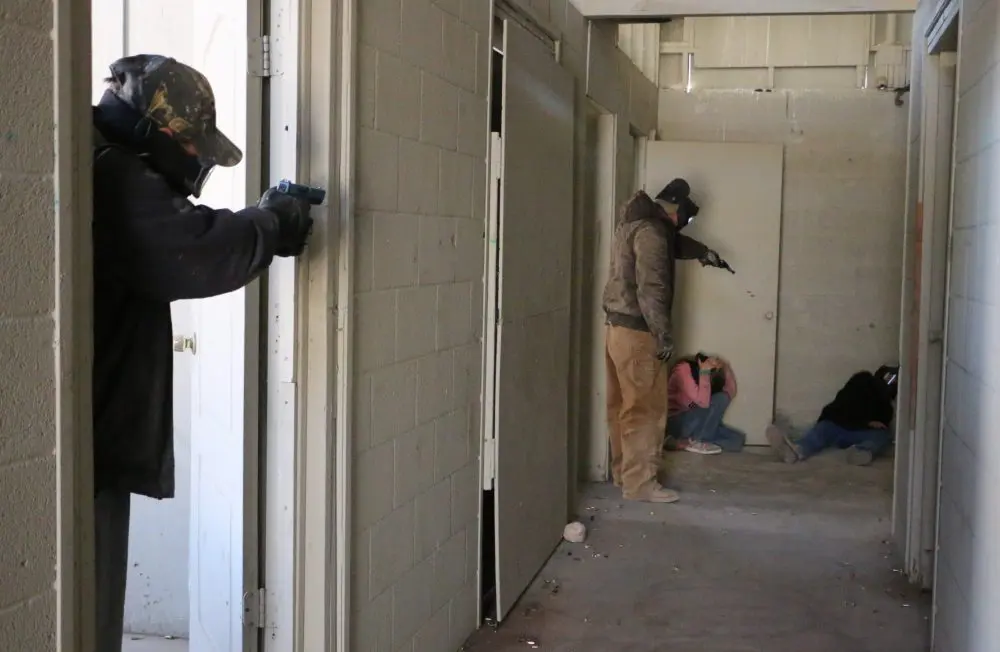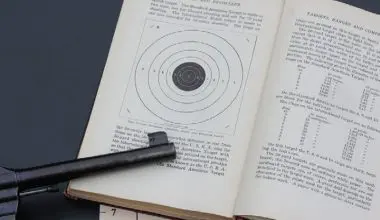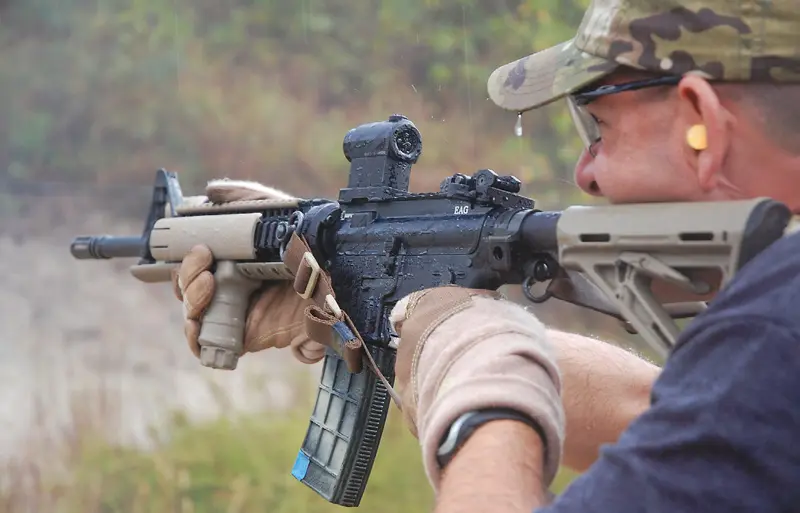
Professionals understand that training is a neverending quest. They start out with initial training and follow that with sustainment training. Additional training is required as new procedures come into play, and that’s followed by still more sustainment training.
Medical folks, pilots, scientists and engineers all engage in continuing education. For those who carry a gun, either professionally or casually, such training is sometimes so limited as to be useless.
Initial training for many may be good to not so good, but sustainment training may be limited to requalification, which has nothing to do with training at all. And for many, the concept of training, as well as the application of such training, may be left in the hands of those without a clue or those with an agenda.
Table of Contents
THE QUESTION OF TRAINING
For example, in the early 1970s, the mayor of a large city mandated that the police department not conduct firearms training (in this case, qualification), because he believed cops who knew how to shoot could be relied on to pull the trigger when necessary. This mayor had plans to be President, and didn’t want a race riot to spoil his chances. Unfortunately, those riots he feared came about, and cops were sacrificed on the altar of political expediency.
Many cops (and others whose job title requires the carriage of firearms) cling to the belief that “If the job wanted me to have more training, they would give it to me.”
Sure they would….
For many who see a clearer path, training may be acquired through other venues and paid for by the individual. Clearly the expense of seeking outside training is prohibitive, leaving some to self-train or train within small groups of like-minded people.
There are issues with self-training/group training, in that what is to be trained or practiced may or may not be what is needed, but rather what the participants like to practice. More on that a little later.
The tendency in all things is to pursue what you do well and avoid (sometimes at all costs) what is difficult or unpleasant. In the world of fighting other bipeds with guns, some can perform high order across the full spectrum of Tactics, Techniques and Procedures (TTPs), but they are few and far between.
Most mortals of both sexes can multi-task. However, the number of balls one can juggle at any given moment varies according to previous training, quality of training, personal ability (yes, that counts as well…), mindset, and motivation.
And because we are mere mortals, we can perform some tasks exceptionally well, others competently, and still others with degrees of difficulty ranging from minor to extraordinarily difficult.
Here is the issue. With the limited time and training funds we have available, we need to devote those resources to the things we don’t do well. But instead, we do feel-good things—those TTPs that we can do easily and that leave us with a warm and fuzzy feeling.
When you head to the range for a day of shooting (hopefully training), you may have a game plan in your workbook. But then again, you may not. Instead of going out to train for a specific purpose, most go out to plink. They have no plan, and as a result accomplish little. In fact, what they do might be in the negative column as they develop and strengthen poor habits.
TRAINING IN INCLEMENT WEATHER
And that is only if you bother to go out to the range at all. How many times have you canceled a range day because of weather? Training in wet weather adds a degree of complexity that doesn’t exist on those days when cottonball clouds float across impossibly blue skies.
Manual dexterity goes down a few notches, and you may find accessing magazines from pouches much more difficult. Eye-pro may fog and, if you are running cheesy active ear-pro, you will probably find them shorting out. If you have a telescope or iron sights, you may have difficulty seeing through the raindrops.
For the wusses, inclement weather means these poor souls no longer want to perfect their warrior’s craft, but rather just want to get it over with.
News flash: You don’t have a choice as to when you’ll get into a fight, and when you do get into one, that fight will end when someone is victorious. You cannot arbitrarily choose to pack up and go home to get warm and reschedule that fight for a more pleasant day. You have to perform at high order regardless of weather, lighting conditions, or if you have taken your daily dose of Advil. If you only train on perfect days, you may never understand what you could be up against.
Understand that a fine line exists between training in inclement weather and being stupid. Clearly there comes a time when continuing to train may be life-threatening, and you need to be smart enough to understand when that happens.
The biggest problem is this. At formal training, you are exposed to a multitude of TTPs. At well-structured classes, these TTPs are building blocks, starting at the crawl level, then advancing through walk and finally to run.
Along with the crawl, walk, run concept, complexity of the drills also increases as time standards are enforced, accuracy standards tightened, and multiple targets introduced. And this is all presented according to a program of instruction that provides a standard.
So far, so good.
But when you are unable or unwilling to attend formal training and instead substitute individual or unsupervised range time, there are two possible outcomes.
The first is that those involved are clear thinkers and have a plan for what they intend to accomplish. They have a goal and strive to meet that goal. In this case, progress can be made.
In the second case, our stalwarts go to the range with no discernible plan. They shoot the drills they do well, and this gives them a false sense of accomplishment, as they do not—consciously or otherwise—train for the TTPs they’re deficient in.
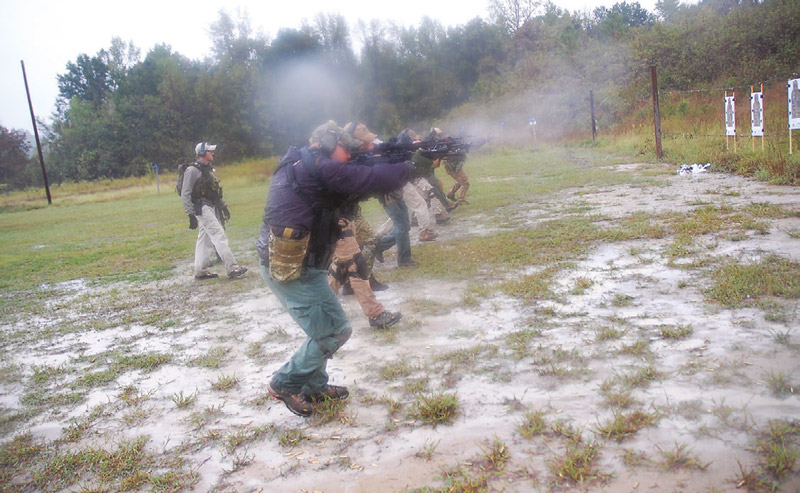

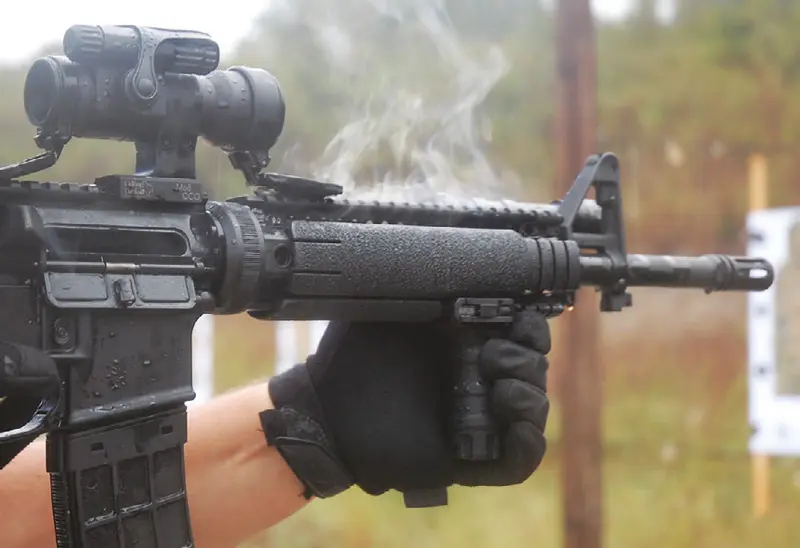
MALFUNCTION DRILLS
For example, when was the last time you self-trained to reduce malfunctions? Performing Immediate Action Drills and Remedial Action Drills may not be sexy or even fun, but they are essential parts of the training regimen.
The fact that malfunction clearance drills can be practiced off the range with dummy ammunition makes it even more difficult to understand why people fail to perform these drills. But if you have a malfunction in the middle of a gunfight, your interesting day may take a turn for the worse.
Without good initial training followed by regular sustainment training, you will likely not be able to reduce that malfunction efficiently while under pressure.
LOW-LIGHT TRAINING
Take it one step further. The engagement process starts with acquiring a potential threat and identifying it as bad guy, unknown guy, or good guy. We know that a lot of fighting takes place in low light, yet very few ever train in low light. We also know that training at night is a pain in the butt. If you can find a place where you can shoot at night, there are a lot of viable reasons for not attending such training. It might disrupt your sleep cycle. Or you might miss Dancing With Has Beens or some other socially significant reality TV show.
But you can compromise. Although getting out to do live-fire low-light training can be difficult, you can accomplish a lot at home. A good portion of fighting with a light, either handheld or weapon mounted, is manipulation of the light. In the case of a weaponmounted light on a carbine, issues such as the type and brightness of the light, light placement, and switchology can be worked out at home.
A caveat: make sure you have an unloaded weapon when doing this. If running a carbine, remove the bolt carrier group from the carbine first.
Here’s another example. We’re all snipers at five yards, no matter if we’re shooting a pistol, a carbine, or even a shotgun. And while various statistics show that most domestic gunfights take place up-close, I am unsure why anyone would use those stats to influence their training.
At the suggestion of Chappy Chapman, I started bringing my Vectronix laser rangefinder around with me when shopping. I have pinged aisles over 200 yards in some stores and malls, and have paced similar distances in hospitals and terminals.
If you get locked into short-range distances for training, you are preparing for failure. Since the Global War on Terror started, at EAG Tactical we’ve seen a drastic decrease in pistol ability. We’re getting people in class who can’t shoot accurately past ten yards, and many who can’t get hits on paper at 25 yards. This is true no matter if they are cops, military, or private citizens.
Worse, we see people having difficulty with the carbine past 25 yards. This is truly depressing but is curable with proper training.
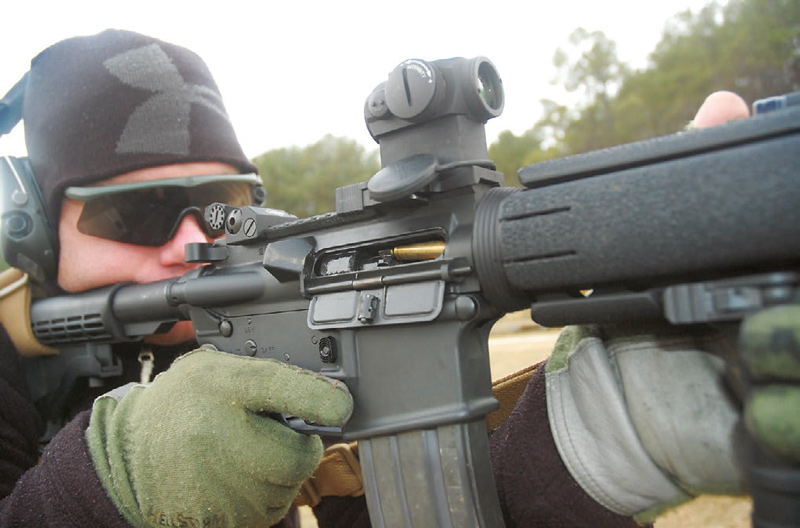
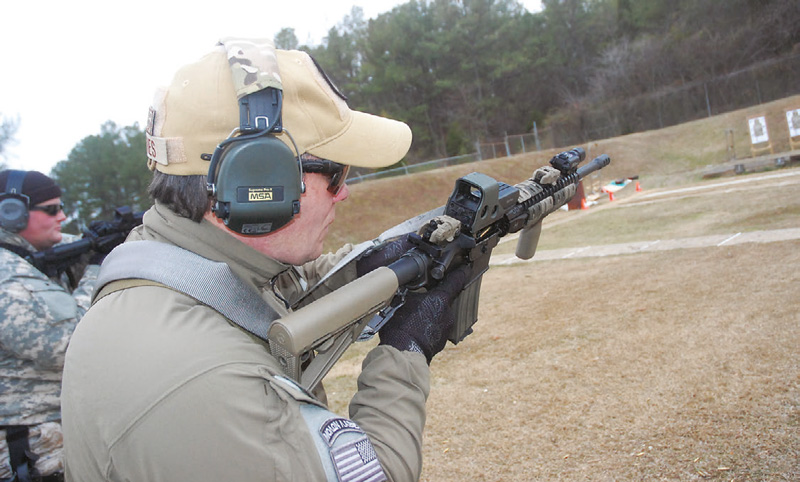
ACTION PLAN
Before you head out for some selftraining or training with a partner, consider the following:
- Have a plan.
- What is it that you need to do? What are you trying to accomplish?
- Run two or more drills per session, depending on the time available.
- Have a pre-planned warm-up or drill that can exercise all the moving parts.
- Unless there is a specific reason to do so, run the majority of your close drills no closer than 15 yards with the pistol and 25 yards with the carbine.
- Execute the plan.
- Run the most difficult drills first. Your mind needs to be sharp for the drills that you may find boring (e.g., remedial action drills).
We can’t make an appointment to have a gunfight. We don’t choose when it starts, and have only one vote as to when it ends. We may have that fight on a lovely spring day or a cold, wet night.
But we can prepare ourselves physically and mentally, so that when the flag flies, we’ll at least have a clue what’s happening.
When all is said and done, practice does not make perfect. Practice only makes permanent—and if we strive only for mediocrity, that is all we will ever achieve.
